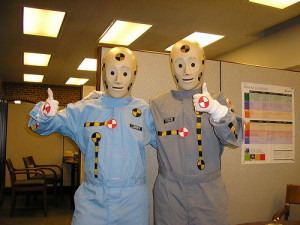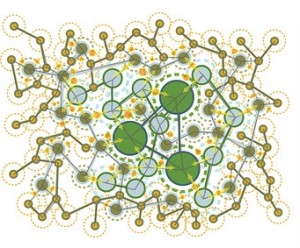From the archive: Originally written in January 2011, this post from my old blog, Graham Hacking Scala, has been consistently popular ever since and I thought it deserved a new lease on life here…
 I started reading Joshua Bloch’s Effective Java last week. I’ll have to admit that I haven’t read it before, but only because I’ve been told by several people, “you already do most of what’s in there anyway.” Seeing as we tell all the new recruits to read it, I thought I should actually flip through it myself so I know what’s in there.
I started reading Joshua Bloch’s Effective Java last week. I’ll have to admit that I haven’t read it before, but only because I’ve been told by several people, “you already do most of what’s in there anyway.” Seeing as we tell all the new recruits to read it, I thought I should actually flip through it myself so I know what’s in there.
Books of best practices are always written in relation to domains that have many possibilities for bad practices (choosing otherwise would make for a very short book). Reading the first chapter of Effective Java, I was amused as I realised that, if you’re coding in Scala instead of Java, many of the book’s recommendations are either unnecessary, because Scala doesn’t permit the corollary bad practice, or built into the language of Scala, or made easier to implement than they are in Java. This isn’t a criticism of the book, but an observation that the state of the art is moving on, and Java is being left behind.
From the first 25 items in the book, here are my notes on practices that either become easier to follow or unnecessary if you are using Scala: Continue reading →
 Hadi Hariri is a Developer and Technical Evangelist at JetBrains. He spoke at YOW! about refactoring legacy codebases.
Hadi Hariri is a Developer and Technical Evangelist at JetBrains. He spoke at YOW! about refactoring legacy codebases.

 Keynote, Day 1:
Keynote, Day 1: 

 Right now, there’s a fantastic “
Right now, there’s a fantastic “ A retired friend of mine has recently become involved in efforts to help newly-released asylum seekers in Sydney. He wrote the email below to myself and a few others. It is a damning assessment, from people on the ground, of how the Australian government is treating people in need. I’m publishing it here because I think it is important for people to know what this government (as well as the main party trying to replace them) is doing in our name.
A retired friend of mine has recently become involved in efforts to help newly-released asylum seekers in Sydney. He wrote the email below to myself and a few others. It is a damning assessment, from people on the ground, of how the Australian government is treating people in need. I’m publishing it here because I think it is important for people to know what this government (as well as the main party trying to replace them) is doing in our name.  You know
You know